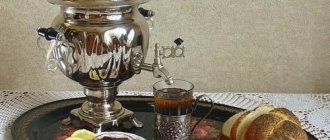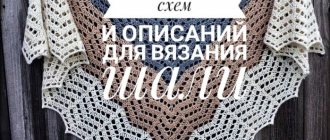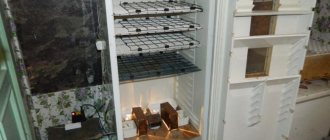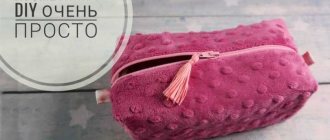Garden markers are a very, very useful thing. Few people bother with them, however, if you approach the issue wisely and organize everything logically and correctly, you will be convinced that this is a sensible and necessary solution, which you really lacked in your garden. You must admit, there have been situations more than once when you planted bulbous flowers and completely forgot about their location, and then reproached yourself for damaging their root system by digging up the ground. There have been misunderstandings when you bought seedlings, planted them in a flower garden, and then accidentally weeded them out, forgetting that it was a cultivated plant. Well, you definitely don’t remember the names of all those plants that grow in your garden. For all these and many other cases you need DIY garden markers! It's cheap, beautiful and very useful!
How to make garden markers with your own hands - 5 master classes:
Garden markers made from wine corks
Cheap and cheerful - this is exactly the case! Wine corks don’t cost anything, and even if you don’t have the right amount of them in your house, you can always call out to your friends and acquaintances - don’t even doubt that they will respond and help. Well, when the necessary material is at hand, mere trifles remain: attach the sticks and make the necessary inscriptions. Agree, the task is not difficult.
How to make garden markers from wine corks with your own hands - master class from Tealarrowdesign
Cute rings
Markers in the form of rings are used when counting stitches on a knitting needle. They easily transfer from one knitting needle to another.
To make such tags you will need:
- jewelry wire;
- beads;
- round nose pliers;
- knitting needle No. 6.
The wire is twisted once around the knitting needle, as shown in the photo.
The resulting ring is removed from the knitting needle and rotated around its axis twice.
The ends of the wire are cut off at a distance of 1.5 cm from the base of the ring.
Use pliers to bend the ends of the wire inward so that they connect to each other. One end is slightly bent. A prepared bead is strung on it.
The remaining end of the wire is inserted into the opposite hole of the bead. To prevent the wire from falling out of the holes of the bead, it should be pressed well from the sides.
The marker is ready. The advantage of such markers is the absence of sharp ends that can cling to the threads of the product.
Garden markers made from wooden sticks
The material is available, the technique is not complicated. Yes, for the most aesthetic result you will need to work a little, however, the beauty and order in the garden are worth it, right? The main thing in this project is accuracy: if you manage to make the inscriptions so that you want to admire them, consider yourself lucky and you were able to achieve the desired result. Enjoy it and, if you wish, continue to improve: you will have many, many more plants in your garden!
How to make garden markers from wooden sticks with your own hands - master class from Makeandfable
Second option
We take an empty tube of finger glue, but instead of a sponge we take burlap. We cut a piece of burlap along the length and width of the tube, the length of the piece is approximately fifteen centimeters. But, this directly depends on the density of the fabric. Then we simply cut off the excess part of the burlap with scissors. If you want your inscription to be visible for a long time (perhaps you need to write something on the street), you can fill the tube with bitumen varnish instead of ink. If you fill with ink, then fill it with a thin stream into a small hole. It is formed by twisting the burlap. Basically, everything is ready!
Garden markers on stones
The stones themselves are a great decoration for your garden. When going on a trip to the mountains or for a walk to the shore of the river, be sure to bring a couple of stones as a souvenir - they can be used to lay out a beautiful hill, you can decorate the path leading to a flower bed, or you can simply use them as a basis to make such garden markers. Paint, brushes, paper - and go ahead to create your fairy garden.
How to make garden markers on stones with your own hands - master class from Mylifeatplaytime
Beauty in miniature
To make markers with a lock, you will need:
- jewelry clasps or carabiners;
- beads, beads, small pendants;
- small nails for needlework (pins);
- small pliers, round nose pliers.
Decorative elements are strung onto the pin in random order.
It is not advisable to use a large number of decorations in one marker, as this can overload the design and increase the weight of the product.
Use pliers to cut off the free end of the pin. In this case, you should leave 0.5-0.7 mm, which are subsequently bent with round nose pliers, forming a miniature hook.
Using the created hook, the beads are attached to the ring of a carabiner or lock.
On the reverse side, the beads are held in place by the head of the stud. If desired, while stringing the beads, you can remove the cap and roll the ends of the pin into hooks on both sides.
In this case, one hook is attached to a carabiner, and the other can be attached to a miniature pendant.
Using a variety of decorative elements in her work, the craftswoman will become the owner of an original collection of markers.
Garden markers on jar lids
A creative person is one who can find a non-standard use for any thing. Look, here's a striking example: a jar lid. Regular metal screw cap. Well, it would seem, what can be done with it? She is boring, primitive and uninteresting. However, it’s worth looking at it from a slightly different angle - and voila, now it’s turned into a cool garden marker!
How to make garden markers on jar lids with your own hands - master class from Theprudentgarden
Practical use
Before creating markers, it is advisable to understand how to use them in the process.
Ring-shaped markers are suitable for counting stitches because they can be easily removed and put on the desired needle.
In the case of counting rows and recording the beginning and end of the pattern, markers are suitable that can be inserted into the yarn and removed at the end of knitting. Rings are not suitable for this type of work. Tags with a hook or lock are used here.
The first ones are simply strung in a certain place. They are convenient for knitting small items (hat, mittens).
If you plan to work on a large fabric, the hooks tend to fly out during the knitting process. In this case, fasteners that fit on the loops like a hook, but have a clasp on the reverse side, are suitable.
Markers with a lock can be considered universal, since they are suitable both for marking stitches in a knitted fabric and for transferring from knitting needle to knitting needle.
Article on the topic: Openwork crochet scarf with ruffles: diagram and description for beginners
But such fastening implies an increase in the weight of the tag, which is not always suitable for loose knitting.
How to refill a marker at home? Basic methods
How to refill the marker? This question is asked by every person whose drawing is interrupted by the rough grinding sound of a dry felt-tip pen. There is absolutely no need to go to the store for a new package of markers, because there are many ways to bring old drawing accessories back to life. Thanks to them, you can restore permanent markers, as well as those that are made on a water basis.
Varieties
Felt pens are made from water or alcohol. There are not only felt-tip pens for drawing on paper, but also on metal, concrete, leather, glass, rubber and other various surfaces. In addition, they are collapsible and non-dismountable. Also, on some felt-tip pens and markers, the manufacturer indicates that they are strictly prohibited from being disassembled or refilled. Let's take a closer look at all these nuances.
Economical application of liquid flux
Somehow, while on the radio market, I came across the LTI 120 flux and decided to buy it, especially since people praised it. I brought it to work and when the opportunity presented itself I decided to test it. Well, what can I say, he didn’t make much of an impression on me. I was more discouraged by the bottle. Externally convenient, under a screw cap there is an oblong spout with a thin hole. But the plastic is quite hard and not transparent, which makes the bottle very inconvenient to use. The first time I made a huge blot on my desktop. I didn’t expect such turnover, and no one warned me. The second attempt also did not bring success, although I tilted the bottle carefully as best I could, the liquid began to spread throughout the bottle itself. As they say, it ran down my mustache, but didn’t get into my mouth. In general, I pushed the bottle away into the corner of the closet until better times.
After some time, the son brings from the office where he works a couple of dozen empty bottles of flavored glycerin for refilling electronic cigarettes (now this is popular among young people). The bottles are made of transparent polyethylene, equipped with a stopper with an oblong thin spout in the form of a tube with a thin hole. The stopper itself is fixed to the bottle quite firmly, like a clip. The hole for light is shaped like an hourglass. I left some of them at home, took most of them to work and distributed them to work colleagues. He poured the contents of an inconvenient bottle into one of these, which he later threw away. I try again, the result is better, I can use it, but it’s still not as good as I would like. You could pour the contents into a larger bottle and apply flux as usual with a brush or cotton swab. But I still wanted some comfort. Since there is always a risk of accidentally turning the bottle over during soldering and spilling its contents. The other day I was poking around on the Internet and came across a video on the topic of soldering. There I saw a rather interesting method of applying liquid flux.
Wow! I thought, I need this. I decided and did it. I took the same bottle and added a simple application to it. Nothing was needed for modification. A piece of tube from a telescopic antenna Ø 6 mm, a piece of spring wire Ø 1.3 mm, a soft spring from either a printer or a disk drive and a strip of ABS plastic 3 mm thick. To begin with, I inserted a small rod into the tube and clamped it all into the drill chuck. The rod was needed so as not to crush the tube in the cartridge. I used this tool to drill several holes in the plastic. This way I got several bosses. I performed a similar operation with a tube of slightly smaller diameter. Next, I cut a piece of spring wire about 5 cm long and rounded one end using a drill and an emery block, giving it a spherical shape. After that, I pricked the future centers of the holes with an awl in both bosses (larger and smaller). In the larger one I drilled a hole Ø about 2 mm, in the smaller one Ø 0.9 mm. I pressed a piece of wire into the smaller boss so that the rounded end protruded no more than 1 mm above the spout of the bottle. I took a piece of about 20 mm long from the tube, first rolling one end slightly. I made a small cut in the middle of the tube for better penetration of liquid inside. The photo below shows everything clearly. A larger boss is inserted into the tube until it touches the rolled part.
I picked up a needle with a diameter slightly larger than the wire and inserted the plug into the spout and warmed it up a little with a hairdryer. Thus giving the hole a new shape. Place all the filling into the back of the cork and you're done.
I inserted the stopper into the bottle and here is the long-awaited result. It turned out to be something between a drawing pen and a washbasin cistern. The bottle now provides an even supply (or application) of liquid flux.
Of course, if we approached this issue more scrupulously, we could do a little better. Namely. Install on the steel axle not a cylindrical boss, but, say, a cone or ball with a hole exactly in the center. Then the opening of the bottle will close more tightly, and this will not allow a single drop of liquid to leak. But I don’t have the opportunity to drill a small plastic ball or cone exactly in the center.
It's better not to refill markers
Many of us remember the popular Soviet-era method of refilling felt-tip pens using any alcohol-containing solution. Mom's French perfume, dad's triple cologne, medical alcohol from the medicine cabinet - everything was used. Today, this method is no longer relevant (to be honest, even in those days, filling with an alcohol solvent “revitalized” felt-tip pens for a very short time) for a simple reason: the sets of felt-tip pens produced in our time have water as a solvent, they are called “water-based felt-tip pens.” basis."
Of course, you can fill water-based ink with an alcohol-containing substance, which will also soak the dye, but, alas, not for long. Don’t forget about such an important aspect as the specific smell that your markers will acquire after filling with alcohol or even perfume.











